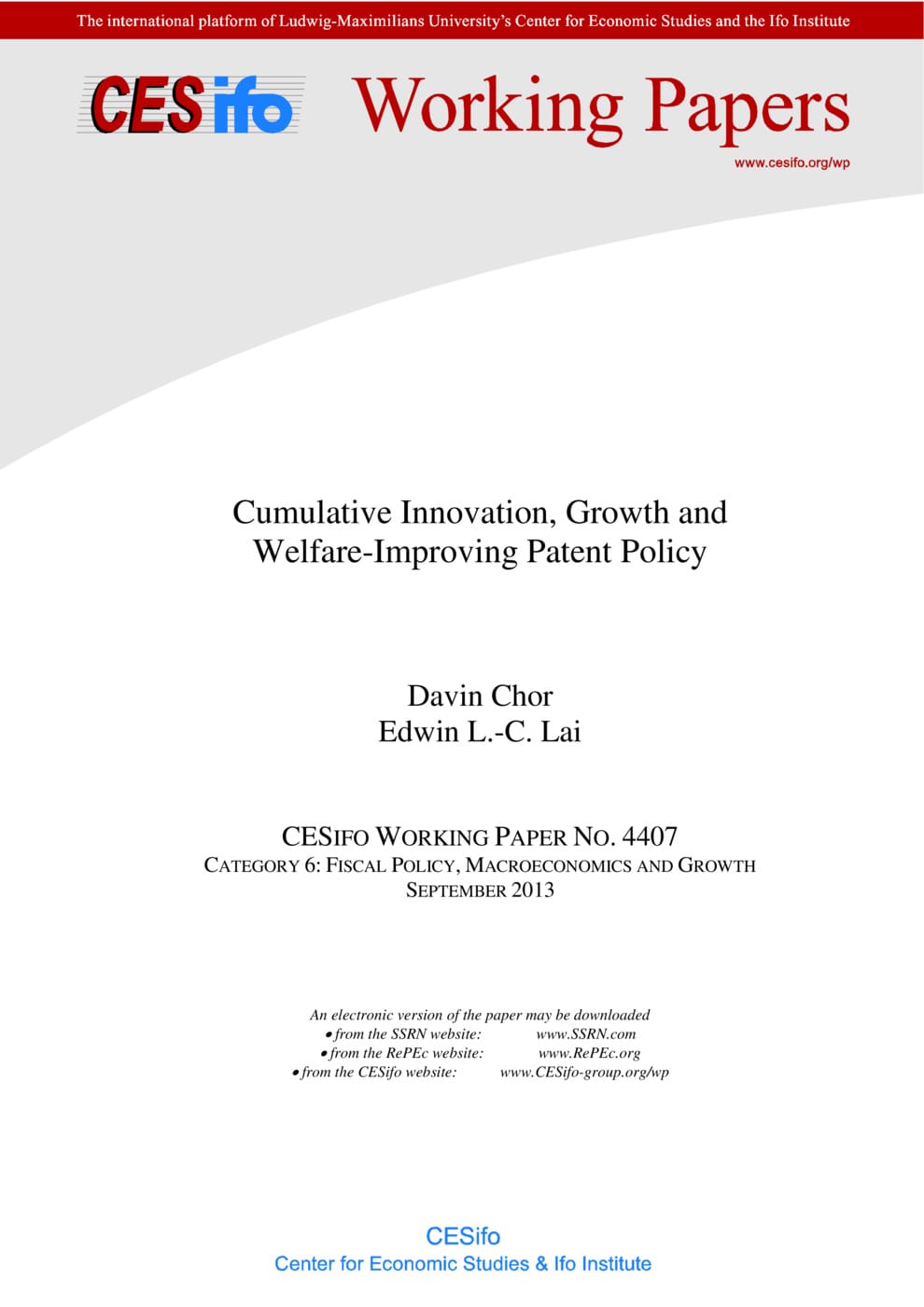Cumulative Innovation, Growth and Welfare-Improving Patent Policy
CESifo, Munich, 2013
CESifo Working Paper No. 4407

We construct a tractable general equilibrium model of cumulative innovation and growth, in which new ideas strictly improve upon frontier technologies, and productivity improvements are drawn in a stochastic manner. The presence of positive knowledge spillovers implies that the decentralized equilibrium features an allocation of labor to R&D activity that is strictly lower than the social planner’s benchmark, which suggests a role for patent policy. We focus on a “non-infringing inventive step” requirement, which stipulates the minimum improvement to the best patented technology that a new idea needs to make for it to be patentable and non-infringing. We establish that there exists a finite required inventive step that maximizes the rate of innovation, as well as a separate optimal required inventive step that maximizes welfare, with the former being strictly greater than the latter. These conclusions are robust to allowing for the availability of an additional instrument in the form of patent length policy.
Fiscal Policy, Macroeconomics and Growth
Industrial Organisation